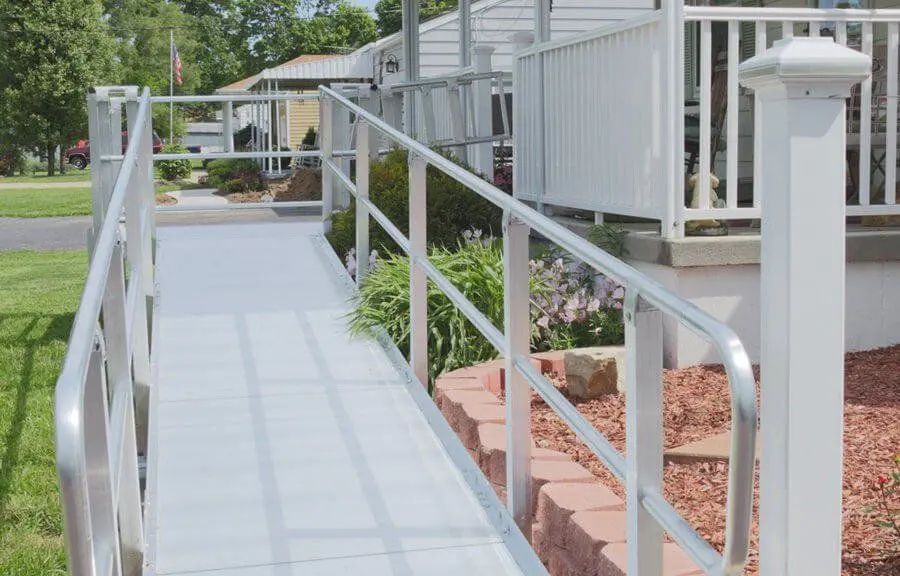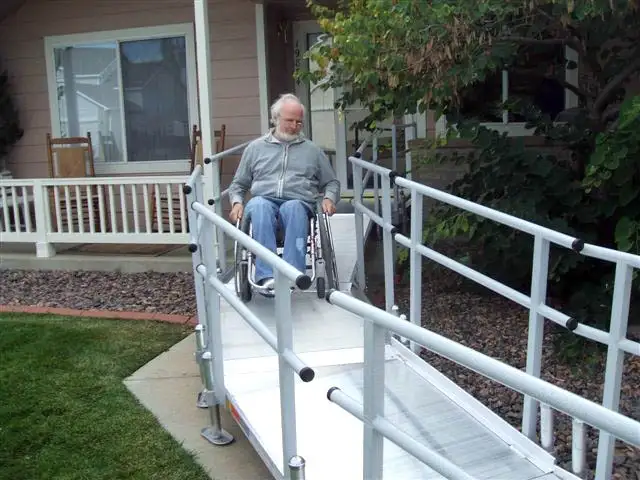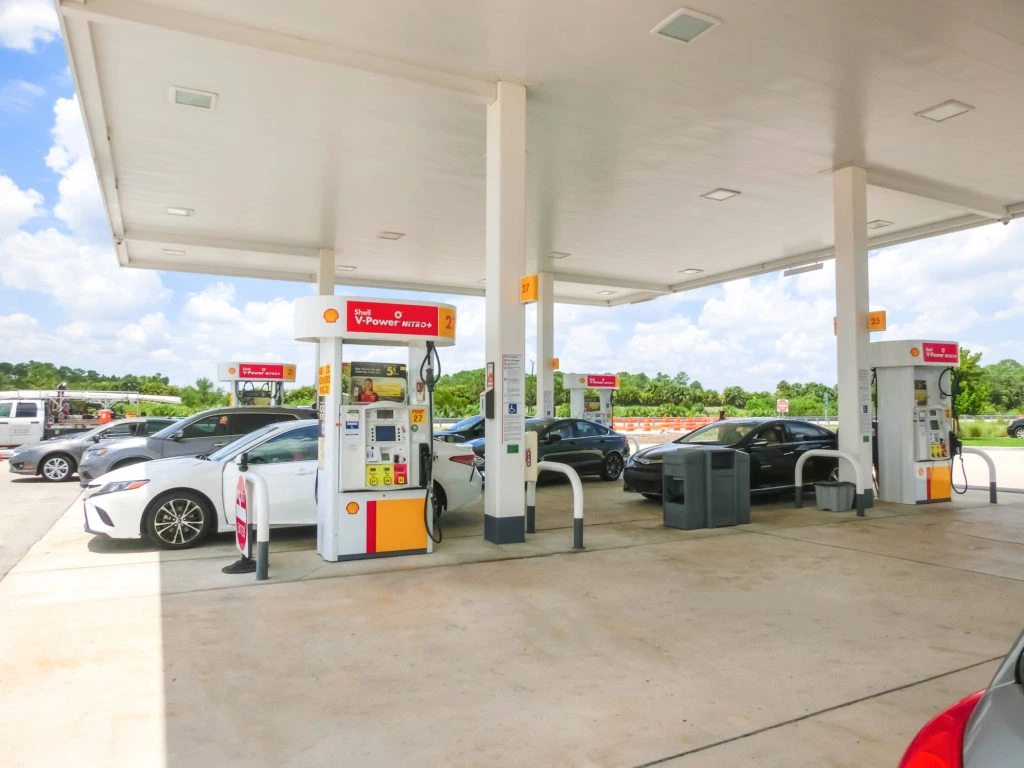Choose ramp materials wisely for gas stations to ensure safety, durability, and ease. Consider weight capacity, slip resistance, and maintenance. Create an inviting space for all customers. Opt for concrete for durability, aluminum for lightness, wood for a natural look, or steel for heavy use. Straight, switchback, and platform designs offer unique benefits. Understand patrons’ needs for optimal selection. Regular maintenance ensures longevity and safety. Empower gas station owners to provide a welcoming and accessible environment. Comparing ramp materials and styles can help you choose the most suitable option based on factors like durability, cost, and accessibility requirements.
Key Takeaways
- Concrete for durability and stability.
- Aluminum for lightweight and easy installation.
- Wooden for a natural look.
- Steel for strength in heavy traffic areas.
- Consider straight, switchback, or platform ramps for varying conveniences.
Importance of Selecting the Right Ramp Materials
Choosing the appropriate ramp components for fuel stations is important for guaranteeing accessibility and security for all customers. Ramps should be selected based on durability, ease of maintenance, and suitability for the station’s layout. Considering factors like weight capacity and slip resistance is vital to ensure the safety and convenience of individuals with varying mobility needs. Proper selection of ramp materials contributes significantly to a welcoming and inclusive environment.
Factors to Consider in Ramp Material Selection
When evaluating incline material options for fuel stations, it is essential to carefully assess factors such as strength, upkeep needs, and suitability with the station’s design. Strength is vital for durability and safety, while considering maintenance requirements helps in long-term cost-effectiveness. Compatibility with the station’s aesthetic and layout ensures a seamless integration of the ramp with the overall design, enhancing both functionality and visual appeal.
Types of Ramp Materials and Their Features
Among the various materials available for constructing ramps at gas stations, each type offers distinct features that cater to different needs and requirements. Materials like concrete provide durability and stability, while aluminum ramps are lightweight and easy to install. Wooden ramps offer a natural look but may require more maintenance. Steel ramps are strong and long-lasting, ideal for heavy traffic areas. Choosing the right material is important for ensuring accessibility and safety.
Comparing Different Ramp Styles for Accessibility
In evaluating various ramp styles for gas station accessibility, it is crucial to consider the specific needs and requirements of both customers and employees. Different ramp styles, such as straight ramps, switchback ramps, and platform ramps, offer varying degrees of convenience and safety. Understanding the flow of traffic, available space, and the level of incline required can help in selecting the most suitable ramp style to improve accessibility at gas stations.

Best Practices for Ramp Material Maintenance
Optimizing the longevity and functionality of incline materials at gas stations necessitates adherence to rigorous maintenance practices aimed at preserving their structural integrity and ensuring continued safety and accessibility for patrons. Regular inspections, cleaning to remove debris, repairing cracks quickly, and applying sealants as needed are vital maintenance routines. Proper care not only boosts the durability of the ramps but also guarantees a smooth experience for all users.
Enhancing Accessibility Through Optimal Ramp Selection
In optimizing accessibility through ideal ramp selection, it is important to consider material selection tips, ramp style considerations, and accessible design factors. These key points play a significant role in ensuring that gas stations provide safe and easy access for all customers, including those with mobility challenges. By carefully evaluating these aspects, gas station owners can improve the overall accessibility of their facilities, catering to a broader range of clientele.
Material Selection Tips
Selecting the most appropriate incline material is an essential aspect of ensuring top accessibility for gas station owners. When choosing ramp materials, take into account durability, slip resistance, and ease of maintenance. Concrete offers longevity, while aluminum is lightweight and requires minimal maintenance. Wood can provide a warmer aesthetic but may need more upkeep. Ultimately, the material chosen should align with the gas station’s aesthetic, budget, and maintenance capabilities.
Ramp Style Considerations
Enhancing accessibility at gas stations can be achieved by carefully considering the design and functionality of incline styles. Ramp styles play an important role in ensuring smooth transitions for customers with mobility challenges. Factors such as slope, width, and landing areas need to be thoughtfully planned to provide a safe and user-friendly experience. Choosing the right ramp style can significantly impact the overall accessibility of a gas station.
Accessible Design Factors
When considering the accessibility of gas stations, the selection of optimal incline materials is crucial in ensuring a seamless and secure experience for all customers. Factors such as traction, longevity, and simplicity of upkeep should be carefully evaluated when choosing incline materials. By prioritizing accessibility in design choices, gas station owners can establish a hospitable environment that caters to the varied needs of their clientele.
Frequently Asked Questions
Are There Any Regulations or Guidelines That Gas Station Owners Need to Consider When Selecting Ramp Materials for Accessibility?
When selecting ramp materials for accessibility, gas station owners must adhere to regulations like the Americans with Disabilities Act (ADA). Guidelines cover slope, width, surface texture, handrails, and more. Compliance guarantees safe and inclusive access for all customers.
How Do Different Ramp Materials Impact the Overall Accessibility and Safety of a Gas Station?
Different ramp materials impact gas station accessibility and safety differently. Concrete offers durability, but can be costly. Aluminum ramps are lightweight but may not be as sturdy. Steel provides strength, but requires maintenance. Each material has pros and cons to consider.
What Are Some Common Challenges Faced by Gas Station Owners When Choosing Ramp Materials?
Gas station owners often face challenges when selecting ramp materials, such as balancing durability, cost-effectiveness, and compliance with accessibility standards. Factors like maintenance requirements and installation complexity further influence their decision-making process.
How Can Gas Station Owners Ensure That the Ramp Materials They Select Are Durable and Long-Lasting?
To guarantee ramp materials are durable and long-lasting, gas station owners should prioritize quality materials like concrete or aluminum, consider the weight capacity needed, conduct regular maintenance, and consult with accessibility experts for guidance on selecting the most suitable options for longevity.
Are There Any Cost-Effective Options for Ramp Materials That Still Meet Accessibility Requirements?
There are budget-friendly incline materials that meet accessibility requirements, such as cement or elastic. Cement inclines offer longevity and robustness, while elastic inclines provide adaptability and straightforward setup. Think about these choices for a mix of cost-effectiveness and usefulness.
Conclusion
To sum up, the selection of ramp materials and styles at gas stations plays a crucial role in ensuring accessibility for all patrons. By carefully considering factors such as durability, cost, and maintenance requirements, gas station owners can make well-informed choices that improve the overall accessibility of their facilities. Implementing best practices for ramp material maintenance is key to sustaining a welcoming and inclusive environment for individuals with diverse mobility needs.
You may also like to read:
Breaking Barriers: Chiropractic Solution for Gas Station Workers’ Arm Pain






